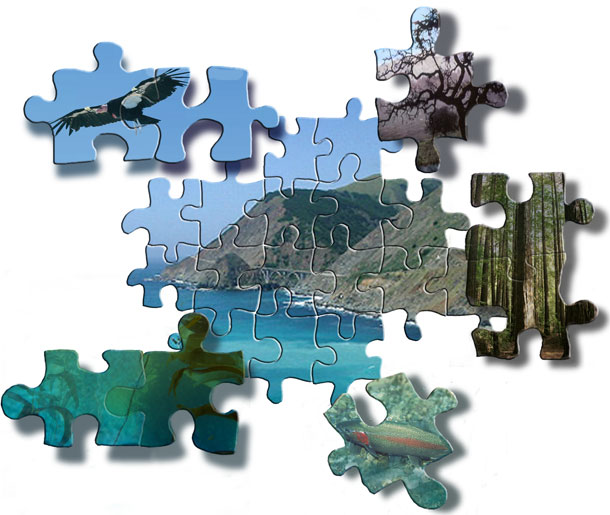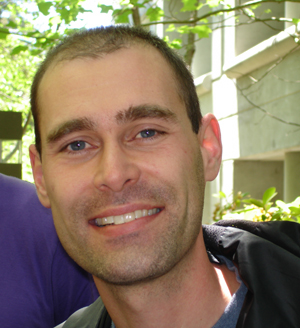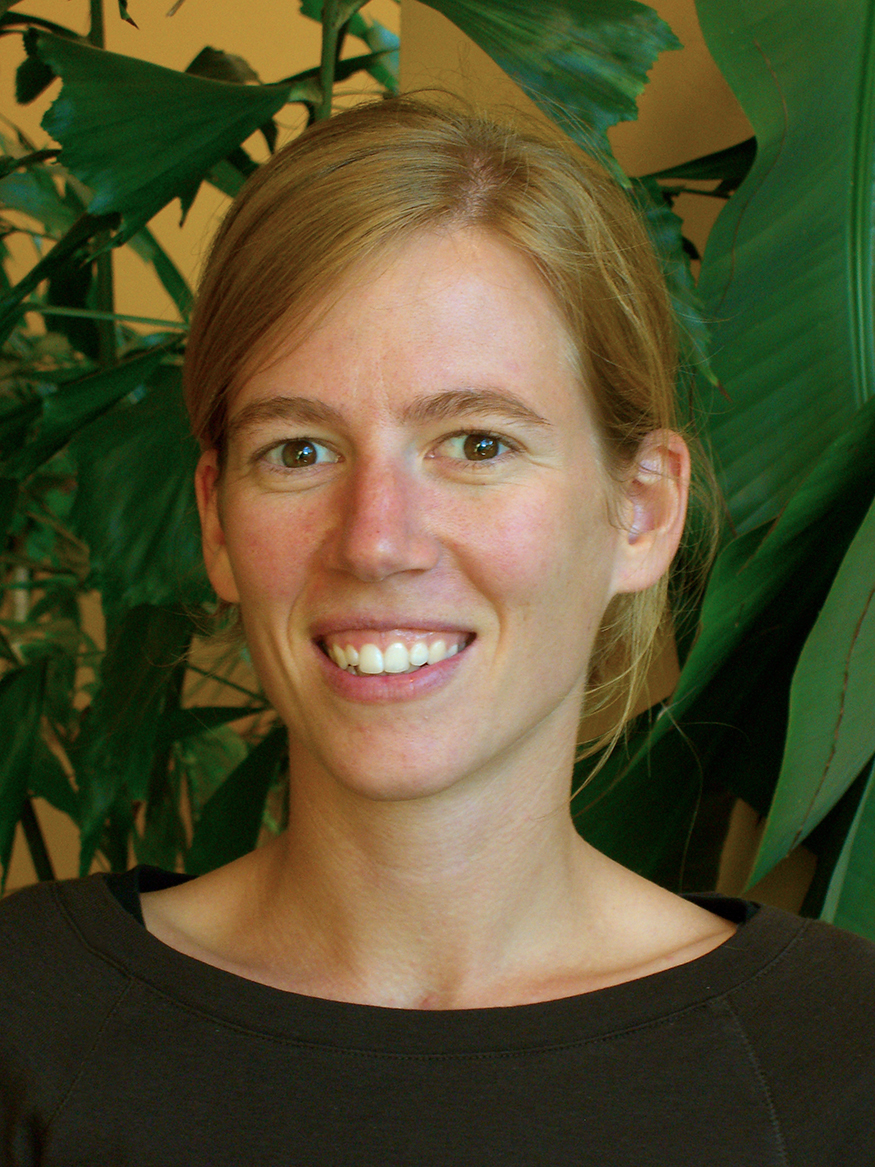
The tree-cloaked ridges of California's Big Sur coastline tumble into the shimmering Pacific Ocean. Within this primal landscape lies a secluded refuge that few know about and fewer still will ever visit. About 50 miles south of Monterey, under a bridge that ushered Big Sur into the automobile era in 1937, sits the entrance to one of the state's ecological jewels: Landels-Hill Big Creek Reserve. Researchers there have a finger on each facet of the sanctuary, from deep-sea crevices and nearshore kelp forests to valley creeks and hillsides dense with oaks.
As one of the University of California's 35 natural reserves, Big Creek requires visitors to have a research or educational mission. The UC reserves dot the state, protecting parts of the Mojave Desert, the Channel Islands, and the Sierra Nevada. Each sanctuary reveals wonders, says Jerry Booth, senior science writer for the UC Natural Reserve System. Big Creek's union of almost unfathomable marine canyons with steep mountain cliffs makes it Booth's favorite. The untouched terrain, he says, offers a window into California's wildlife before modern-day development and pollution arrived: "It's almost like having the chance to look back in time."
Big Creek's footprint on land covers less than 18 square kilometers. But the topography is dramatic: Mountains jut up 1200 meters from the sea, providing a home for redwood, oak, and pine forests mixed with grasslands and coastal chaparral. The land's folds catch water and fog in shadowy canyons, while sun blasts nearby ridgetops dry. Clefts in the recessed slopes enable cold and wet pockets of redwoods to grow just yards from desert yuccas. Offshore an equally wild ecosystem flourishes, teeming with kelp forests and sea creatures. The marine reserve's recent expansion from 5 to 30 square kilometers means its depths now encompass the heads of submarine chasms, nearly 800 meters deep.
These stark transitions open rare doors for science, says Kurt Merg, Big Creek's site manager. "We are one of the only places where researchers can stitch together the marine and terrestrial sciences, because we have relatively unimpacted habitats of both kinds of significant size adjacent to one another."
In a creekside cottage tucked near the entrance with a postcard view of Big Creek Bridge, Merg lives with his energetic wirehaired pointing griffon "Pinta." The pair greets visitors who arrive to investigate the reserve's marine life and woodlands. Some scientists who visit never step foot on land. Instead, they start their observations in deep waters offshore.
A yellow submarine goes deep
To explore hidden marine habitats, scientists from the National Oceanic and Atmospheric Administration board a small submersible dubbed Delta. "It really is a little bright yellow submarine," says researcher Mary Yoklavich. "We go from just beyond what scuba divers can access to a depth of about 1,000 feet."
The goal of Yoklavich's dives is a statistical representation of Big Sur's seafloor ecosystem. Overfishing has destroyed many ocean habitats. According to a recent study in Science, almost all fish and shellfish populations could collapse by 2048 if unsustainable trends continue. In hopes of preserving California's central coast, scientists like Yoklavich are collecting data to help shape conservation policy.
Delta's tight interior is divided between a pilot and the scientist trained to identify, count, and measure fish. To create a "ruler" for measurements, Delta employs two parallel lasers, 20 centimeters apart, that project two dots onto the seafloor. A camera also captures the entire sweep of what Delta can spy. "We are interested in rocky areas that you really can't survey any other way," Yoklavich says.
After 43 different dives, Yoklavich taped more than 100 video scans to inspect. Her team identified almost 70,000 individual fish, and found nearly all were rockfish—a variety of catch important to the fishing industry. About 93 percent belonged to 20 species of rockfish, which live among seafloor boulders and make tasty restaurant meals.
In 2004 Yoklavich tried to enhance her Big Creek undersea surveys. She used laser line-scan imaging technology to generate near-photographic images of an otherwise black abyss below. The equipment detects light emitted from a blue-green laser that scans back and forth, reflecting off whatever lies beneath. The images resolve drifting kelp, sea anemones, rock outcrops, and dense fish groups—superceding the resolution of sonar, which uses sound. Yoklavich hopes that software and hardware upgrades may make the tool even more practical. But for now, she says, old-fashioned eyesight is better for identifying species.
Seeing the forest for the kelp
Closer to shore, the species survey continues with researchers and volunteers trained in scientific scuba-diving. Graduate student Kendra Karr of the University of California, Santa Cruz, oversees the dives, which on choppy days can nauseate even the best divers. "When there are [big] swells with wind, I can have people come up from a dive yelling how miserable they are," Karr says.
Karr's research focuses on how Big Creek's kelp forests shelter and sustain invertebrates like young starfish. The forests are like nurseries for fish, crabs, oysters, and harbor seal pups that frolic in their waters. Kelp can reach down more than 20 meters; viewers along the coast can use this measure to estimate the water's depth where they see a kelp forest end. About 90 percent of the kelp's biomass floats at the canopy just yards below the surface. "They grow out like a dandelion in all directions," Karr says, holding her palms open.
Karr hypothesizes that without kelp beds, a coastline's biodiversity would plummet, starting with microscopic invertebrates. To test her idea, she clear-cut a nearby kelp forest to compare against an intact kelp bed at Big Creek. A team of scuba divers took hedge-cutters to every stipe, the kelp equivalent of a trunk, within a patch of seafloor the size of a three-bedroom house.
Diving at both locations, Karr caught tiny invertebrates in fine-mesh nets like an underwater butterfly collector. She also rigged rough plastic sponges to ropes at different depths to accumulate samples between nettings. "I think restaurants might use them like Brillo pads because they are pretty good at getting stuff off of pans, but they also make good invertebrate collectors," she observes.
Back at Karr's laboratory, tabulators peer into microscopes to sort out the tiny echinoderms, gastropods, and bivalves—all the while referring to an overhead poster of species entitled, "Kendra's Most Wanted." So far the numbers support Karr's hypothesis. When kelp canopies disappear—whether because of sewage outflow, harvesting, vigorous storms, or rising ocean temperatures—fewer invertebrates remain.
Where land meets sea
Another scuba-clad researcher from UC Santa Cruz, Melissa Foley, may discover how kelp forests rely upon specific nutrients from the nearby hillside. Foley is detecting the elements rinsed from Big Creek that help sustain the kelp canopy near the stream's mouth.
Ecologists have long known that soil, rocks, and trees contribute to the kelp's nutritional needs, but they have never quantified those meals. Using a mass spectrometer, a machine capable of examining precise levels of elements, Foley is determining whether the carbon and nitrogen in the kelp's blades originate from the ocean or the hillside. "If they are getting pieces of redwood tree in their diet, that should show up," Foley says.
She takes blades of kelp, dries them out, grinds up the tissue, and puts it through the mass spectrometer. By comparing the carbon and nitrogen signatures of kelp near Big Creek's mouth with the same chemical signatures in kelp far from rivers, she can begin to distinguish the hillside's influence. She conducts a similar procedure for tissue samples taken from sponges, snails, mussels, and starfish. The combined data, which Foley is still gathering, will help her figure out how nutrients from the ridges and forests affect the whole ecosystem near the creek.
The unspoiled Big Creek watershed—with no agriculture, ranching, or human impacts—makes the reserve an ideal spot for Foley's research. "I don't have to worry about confounding factors like fertilizer runoff, animal waste, or people dumping stuff into the rivers," she says. If Foley does trace the connection between the kelp and rock minerals leached by mountain streams, she will make a singular contribution to the emerging area of how land and sea interact.
"Once we understand what links there may be, we can understand kelp forests in a way that we couldn't if we just studied them in the ocean," Merg says. "If we are going to make a significant impact scientifically through this reserve we really need to understand how the land and sea connect, so we can stop treating them independently."
A steelhead in hand is worth two at sea
While Big Creek washes nutrients to the sea, it also presents a path home for returning steelhead, a kind of rainbow trout that swims out to sea and returns to spawn in fresh water. The U.S. Endangered Species Act has listed most steelhead populations in Oregon, Washington, and California as either threatened or endangered. For the past several years, National Marine Fisheries Service (NMFS) biologist Tommy Williams and his colleagues have monitored the life cycle of steelhead at Big Creek.
Each year a field crew clambers along more than two kilometers of the stream bed, stunning hundreds of fish with a mild electrical current in order to capture, measure, and weigh them. Since 2005 they have implanted a transponder the size of a rice grain into each fish's belly in order to distinguish individual steelhead. The fish identifiers are the same passive-integrated transponder tags placed in dogs and cats by veterinarians.
When fish pass through a wire antenna loop, half buried below and half dangling over the creek like a low-hanging telephone wire, a computer registers their number and time. With two loops positioned near the mouth, NMFS researchers can determine whether fish are heading up or down the stream. "It's like FasTrak for fish," Williams says, referring to the electronic technology that allows drivers to zip through toll plazas. Big Creek's restricted access enables Williams to leave this equipment without worry.
The stream sections surveyed so far have revealed Big Creek's juvenile steelhead population is stable: about 4000 fish. The scientists also have discovered that some homebodies linger throughout the year in pools near the antennas. "A lot of fish don't move very much," Williams says. "They will hang out within a couple hundred feet of the stream where they were tagged for a year or two."
After tagging several thousand fish, Williams has yet to tire of handling them or scrambling up and down the creek. "You can't cross the same river twice," he says. "There is always something new."
Great tanoaks, from little acorns, die
But even clean streams can turn deadly. These waters can harbor the whip-tailed microbes responsible for tens of thousands of oak deaths in California. To bait the pathogen Phytophthora ramorum, plant biologist Kerri Frangioso sinks mesh-bags of fresh rhododendron leaves into Big Sur creeks to culture in her lab at UC Davis. The water-loving fungus, related to the blight that caused the Irish potato famine, is blamed for the recent spread of "sudden oak death" across coastal California. "Stream monitoring is one of the first ways to detect sudden oak death in the watershed," Frangioso says.
The disease has wiped out entire hillsides of tanoaks in Big Sur. The killer fungus creates black spots on carrier species like bay laurels, which in turn release spores into the air. Winds blow billowing clouds of spores up coastal canyons, where they land on mud to wriggle into new hosts, researchers believe.
Historically, no such forest infection has been eradicated in nature, Frangioso says, suggesting it's impossible to stop the fungal invasion. Even Big Creek's borders cannot halt this invidious spread. Frangioso already has discovered an infection site in the reserve. "Essentially, in Big Sur we are imagining the extinction of tanoaks," she says—possibly in 30 years.
Frangioso monitors the spread of sudden oak death with a network of plots randomly generated through the Global Positioning System. Each circular plot is about 23 meters wide. Her team records every tree and shrub rising to breast height, and collects leaves to test. Some plots may have only four trees, while others have almost 200.
Sudden oak death teaches a harsh lesson on how biological invaders decimate native populations. The victims may be all the tanoaks along California's coast—trees that have thrived here for hundreds of thousands of years. Says Frangioso: "It is a very ancient tree that has been hand in hand with redwoods forever."
Panoramas for hungry condors
A more uplifting outlook is emerging for another threatened species. The California condor may soon soar to new heights in Big Creek's skies.
The Ventana Wildlife Society has placed stillborn calf carcasses in Big Creek to try to entice the bird to return to its historic flight patterns along the rocky coast. Since releasing condors into the wild in 1997, the nonprofit group has found that reintroduced birds sometimes fall ill to lead poisoning. They often consume gut piles left by hunters that contain lead shot. [See Condors: A Modern Phoenix in this issue of Science Notes.] "Big Creek is an area where we can provide clean food and where we know no hunting is happening," says Joe Burnett, senior biologist for the condor recovery program. "It is a large tract of land that is very rugged and very protected."
The feeding spots seasonally move from a remote location in the summer to a more viewable peak in the off-season: Gamboa Point. The point's 360-degree panorama from the coastline to the eastern ridgetops provides an excellent Big Creek introduction for the condors, Burnett says. Just above the water, the carnivores could spy dead washed-up marine mammals, while the chasm of Devil's canyon to the east would beckon them inland.
"The first thing I thought when I got up on Gamboa Point is that this is really condor country," Burnett says. "I looked around and I thought, this is where the birds need to be." One pair of condors that frequent the picturesque buffet is now nesting in a cave east of the reserve, in a remote area of the Ventana wilderness. Burnett believes the condors soon will pick one of Big Creek's rocky ledges, cliff crevices, or old redwood hollows to build a nest and raise a family.
One would expect scientists to flock to Big Creek as well. However, surprisingly few come to explore its ecological wealth. "I believe Big Creek is woefully underutilized," Merg says. "It's not a limit of possibilities—the limit here is on the supply side of researchers."
UC Natural Reserve System writer Jerry Booth agrees. "There is huge research potential at Big Creek," he says. "Kurt has been working really hard to get Big Creek back on the map. It's such a spectacular place that if he keeps at it, he will find a good number of scientists who will want to be down there. It's just a matter of time."
ABOUT THE WRITER
Brian Lee
B.A.(biology), B.S. (gerontology), University of Southern California
M.A.(molecular biology), University of California, Santa Barbara
Internship: Stanford Medical School news office
 "What does this mean, why did that happen, and what
is the point of all this?" While many graduate students suffer these
uncertainties, I acted on them. I ditched my Ph.D. training and hitched to
Vancouver before taking a Greyhound bus to New York. Yet even after
arriving in Montreal and Dublin to work using student visas, those concerns
trailed close behind. After my father died, I finally engaged them in
meditation as a source of inspiration. Now for a career, I will once again
ask those questions—as a science journalist.
"What does this mean, why did that happen, and what
is the point of all this?" While many graduate students suffer these
uncertainties, I acted on them. I ditched my Ph.D. training and hitched to
Vancouver before taking a Greyhound bus to New York. Yet even after
arriving in Montreal and Dublin to work using student visas, those concerns
trailed close behind. After my father died, I finally engaged them in
meditation as a source of inspiration. Now for a career, I will once again
ask those questions—as a science journalist.
ABOUT THE ILLUSTRATOR
Lisa Apfelbacher
M.S., sustainable forestry and landscape management, University of
Freiburg, Germany
 Arts or Science—I don't know how
long I was thinking about doing either the one or the other. As a child I
spent a lot of time discovering fields, meadows, and forests close to my
parents' farm. On numerous rainy days I was drawing objects I have seen
outside. However, trying to professionalize my early passion after high
school seemed impossible at the time. After gathering experience in a
National Park, I made the decision to go the scientific way. I studied
forestry to contribute to nature conservation. I learned a lot about nature
and ecosystem management in the past years but always had the feeling there
was lacking something. When I found out about the Santa Cruz program
everything came together. Science Illustration—for me, it's the
perfect combination of my interests and a unique way to bring people into
nature and science.
Arts or Science—I don't know how
long I was thinking about doing either the one or the other. As a child I
spent a lot of time discovering fields, meadows, and forests close to my
parents' farm. On numerous rainy days I was drawing objects I have seen
outside. However, trying to professionalize my early passion after high
school seemed impossible at the time. After gathering experience in a
National Park, I made the decision to go the scientific way. I studied
forestry to contribute to nature conservation. I learned a lot about nature
and ecosystem management in the past years but always had the feeling there
was lacking something. When I found out about the Santa Cruz program
everything came together. Science Illustration—for me, it's the
perfect combination of my interests and a unique way to bring people into
nature and science.